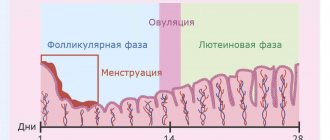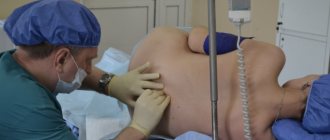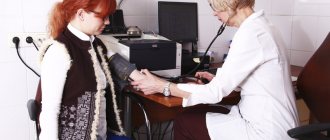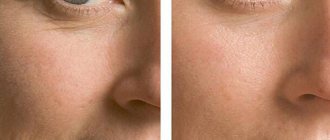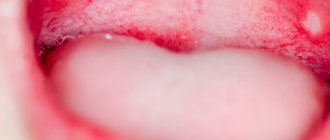After your first period, your body establishes a cycle of ovulation and menstruation, which lasts about 28 days. But how does this all happen?
The menstrual cycle is a natural part of every woman's life. In order to understand how it happens and how long periods last, you need to study female anatomy.
Hymen
A soft, elastic layer of skin with an opening that surrounds the entrance to the vagina from the outside. Many girls' hymens break down long before they lose their virginity.
Vagina
Elastic muscular tube. At first, the vagina is narrow, but it expands in depth.
The vagina connects the uterus to the external genitalia. The entrance to the vagina is located between the urethra and the anus.
Cervix
Entrance to the uterus and vagina
Uterus.
It has compacted muscle walls and a small cavity, the walls of which are covered with mucous membrane.
Fallopian tubes
Through them, the fertilized egg enters the uterus with the help of tiny villi.
Ovaries
Eggs mature inside them.
Endometrium
The fertilized egg is located in this glandular tissue. If the egg is not fertilized, the glandular tissue leaves the body during menstruation.
Pelvic floor muscles
Keep the genitals in their place.
Clitoris
Located in the front of the urethra, between the labia minora, it is a cluster of nerve endings that cause sexual arousal.
Labia
The opening to the vagina is surrounded by the outer (major) and inner (minor) labia.
Periods (phases) of the menstrual cycle
Every menstrual cycle, a woman's body prepares for pregnancy. The menstrual cycle can be divided into several periods (phases).
Most often, the duration of the menstrual cycle is 28 calendar days. However, for each woman it is strictly individual; it’s normal if it falls within the range of 21 to 35 days. The main factor is its constancy throughout the reproductive period; permissible deviations are no more than 3 days. An important indicator is also the amount of discharge and the woman’s well-being during this period. Any changes in the normal rhythm or signs of malaise are a reason to consult a doctor, as they may well become the first signs of a disease.
Popular questions
Tell me, the condom broke (day 19 of the cycle (cycle 27-28 days), which is better to take gynepristone or postinor?
Hello! When choosing an emergency contraceptive drug, contraindications specifically for you are taken into account.
There may be a normal cycle of 28 days, the duration of menstruation is 2 days. during pregnancy?
During pregnancy, there cannot be menstruation, since conception and implantation of the fertilized egg into the endometrium have occurred, which triggers a mechanism that prevents its rejection.
Cycle 25 days. The unprotected period was on the night of February 12-13, the last menstrual period was 1.02. What is the likelihood of pregnancy and when can I take a test?
Hello! With unprotected sexual intercourse, the likelihood of pregnancy is very high. The test will be reliable if there is a delay of 3 days.
I am 48 years old; menstruation began at the age of 11; it went on for a week, now it began to go for 3 days, but not so heavy. And the last ones started on February 28 until March 4, they went fine, from March 5 to March 12 it was blurry, and on March 13 they started again. What could it be?
Hello!
You are describing a menstrual irregularity. This requires an immediate visit to the doctor and an examination, including a smear for flora and oncocytology, an ultrasound of the pelvic organs, which will accurately identify the cause of bleeding. For an accurate diagnosis, contact a specialist
Follicular period of the cycle
This is followed by the follicular period, characterized by the cessation of discharge. At this time, increased synthesis of pituitary and hypothalamic hormones begins, affecting the ovaries. The main one is follicle-stimulating hormone (FSH), which causes intensive growth and development of several follicles. The ovaries, in turn, produce the sex hormone estrogen; its significance is to stimulate endometrial renewal and prepare the uterus to receive an egg. This stage lasts about two weeks and ends due to the release of hormones into the blood that suppress FSH activity.
What to do when your period starts?
The mother should prepare the girl for this event several months, and ideally several years before the onset of menarche. But even a theoretically prepared child, seeing blood-stained underwear, can be scared.
What should all family members do:
- To mom.
I must calm the girl down, congratulate her, and give her hygiene products. Remind your daughter to change the pad after 3-4 hours, regardless of how full it is. - To the girl
. It is necessary to inform the mother about the upcoming event. Observe hygiene requirements and do not perform labor or sports feats. - Dad
, other family members. Congratulate the child, buy a cake. Do not give lectures about the need to be modest and not communicate with boys, do not scare them with a possible pregnancy.
Ovulation
The phase of ovulation begins, that is, the release of a mature egg from the follicle. As a rule, this is the largest of them. This is facilitated by a sharp increase in the level of luteinizing hormone (LH). The egg enters the lumen of the fallopian tube and begins its movement towards the uterus, at the same time awaiting fertilization. Its lifespan does not exceed two days, so to increase the likelihood of conception it is necessary that the sperm is already in the fallopian tube. At this time, the process of preparing the epithelial layer continues in the uterus.
At what age do girls start menstruating?
In girls of the European race, menarche most often occurs at 12-13 years of age, less often menstruation occurs at 10-11 years and 13-14 years1,2,3. Over the past 100-150 years, scientists have observed a marked decline in the age at which puberty begins2. Therefore, menstruation in a 9-10 year old girl no longer frightens doctors and parents2,3. Rather, the absence of menstruation at the age of 14.5 years is alarming2,3.
All the figures we have given are average values. Things may be a little different for you. The appearance of menarche is influenced by many factors:
- Genetics. If your mother started menstruating later than her peers, then there is a chance that you will have to wait a little too2.
- Race. Early menarche is typical for representatives of the Negroid race, Latin Americans, and for Caucasians and Asians, menstruation begins later2.
- Nutrition. Good nutrition promotes the formation of menstruation, but diet delays puberty 2.
- Body mass. Slightly plump girls start their periods earlier2. But if body weight is significantly higher than normal, there is a delay in the appearance of menstruation2.
Up to contents
Luteinizing period of the cycle
The final period of the menstrual cycle is the luteinizing period. Its duration, as a rule, does not exceed 16 days. At this time, in place of the follicle that the egg left, a special temporary gland is formed - the corpus luteum. It produces progesterone, which is designed to increase the sensitivity of the endometrium, in order to facilitate the implantation of a fertilized egg into the wall of the uterus. If implantation does not occur, the corpus luteum regresses and progesterone levels drop sharply. This causes destruction and subsequent rejection of the epithelial layer, the cycle closes.
Hygiene products
{banner_banstat3}
The first hygiene products should be prepared by the mother of a teenage girl at the first signs of the end of puberty. That is, if the daughter is 11–12 years old, then a package of pads should be in the teenager’s closet.
Tampons should not be used at this age. The girl has no experience of behavior during menstruation or the skills of inserting a tampon. Due to inexperience, she may forget about this hygiene product in the vagina, which is fraught with the development of an inflammatory process.
When choosing gaskets, consider:
- Age
. You should not buy hygiene products designed for heavy discharge. For the first cycle, pads marked “Normal” or 2 drops are enough. Additionally, purchase a kit for use at night. Such pads are longer than regular ones and the risk of staining the bed linen is minimal. - Quality
. The girl should be comfortable. This must be a manufacturer tested by my mother. It is best to use ultra-fine products. They do not restrict movement and are invisible under clothing.
Before menstruation, the mother should check with her daughter about the availability of hygiene products. Despite the outward appearance of maturity or swagger, the teenager will be embarrassed to purchase pads for a long time.
Phases of the menstrual cycle
| First phase (follicular, or egg development) Day 1-5. Menstruation: Menstruation usually lasts from 2 to 7 days, with an average of 5 days. During this phase, the inner lining of the uterus (endometrium) is shed and menstruation begins. Contractions of the uterus at this moment may be accompanied by pain in the lower abdomen. Some women have short periods (for example, 2 days), while others can last as long as 7 days. Bleeding may be profuse and spotting. In the first half of the menstrual cycle, a follicle grows in the ovary, where an egg develops and matures, which then leaves the ovary (ovulation). This phase lasts about 7-21 days, which depends on many factors. | Ovulation Day 14. Release of the egg. Ovulation usually occurs from the 7th to the 21st day of the cycle, often in the middle of the menstrual cycle (approximately on the 14th day in a 28-day cycle). After leaving the ovary, the mature egg moves to the uterus through the fallopian tubes. | Second phase (formation of the corpus luteum) Day 15-28. Thickening of the inner lining of the uterus. After ovulation, the ruptured follicle transforms into the corpus luteum, which produces the hormone progesterone. |
You can make an appointment with a doctor by phone in Moscow: +7 (495) 601–15–15 or here. you can see the doctor here.
| m. Krasnopresnenskaya |
| Konyushkovskaya st., 26 |
Days of menstruation
Let's take a closer look at what changes in the female body occur during menstruation.
Day 1. At the beginning of the menstrual cycle, it begins with the rejection of the “old” endometrium - a special layer of the uterine mucosa - and the bleeding itself. This process, necessary for the female body, often becomes one of the most uncomfortable periods of everyday life. Unpleasant sensations during menstruation are normal and are caused by contractions of the uterus.
Day 2. On the second day of the monthly cycle, pain and heaviness in the abdomen may persist. Meanwhile, the body begins to form a new egg. During menstruation, the functioning of the sebaceous glands may change due to hormonal changes, so it is important to pay special attention to personal hygiene.
Day 3. After the “old” endometrium is rejected, a wound surface forms on the walls of the uterus. At this stage of the menstrual cycle, the risk of infection is especially high, so gynecologists recommend abstaining from sexual activity while your period lasts.
Day 4. By the 4th day of the menstrual cycle, the woman’s well-being improves, but during menstruation it is still worth limiting physical activity and trying not to overwork. Following these recommendations reduces the amount of blood loss during menstruation.
Day 5. As a rule, menstruation lasts 5 days, but there may be individual differences. During this time, the healing process in the uterus is completed. Metabolism accelerates in the renewed body, and the woman feels much better and more energetic compared to the beginning of the menstrual period.
It is the duty of every woman to know everything about it and be able to feel her body.
In addition to the article, our online store offers you modern intimate feminine hygiene products that will help you get through your period with maximum comfort and safety.
For example menstrual cups:
The menstrual cup is an ultra-modern product for feminine intimate hygiene. Gives a new degree of freedom during the period. Menstruation is no longer a reason to put things off.
We always have in stock a simply gigantic assortment of silicone menstrual cups from various manufacturers.
Germany, Finland, Spain, Russia, China. Anatomical shape, cups with a valve, shortened cups (for a low uterus), soft or hard cups (sport), sets of cups S+L, S+S, L+L, etc...
You can get acquainted with it and choose the one that suits you on the product page:
Special reusable menstrual panties, protective with a waterproof layer, or hygienic, with a waterproof and absorbent layer, which can be worn without tampons and pads. It's easy to choose your size from products from more than 10 manufacturers.
, UNA hygienic menstrual panties are put on the model inside out so that you can estimate the size of the absorbent and protective waterproof layers.
With high, medium or low waist. Slips, bikinis, and even thongs.
Visit our online store page with special underwear for your period: “Menstrual panties”



